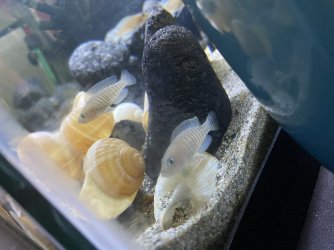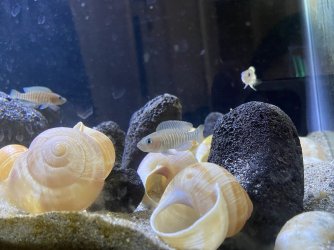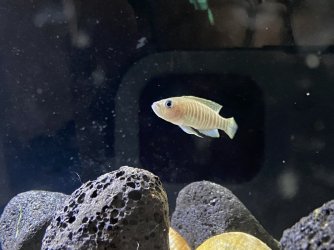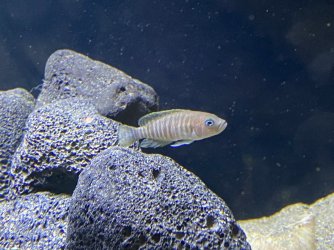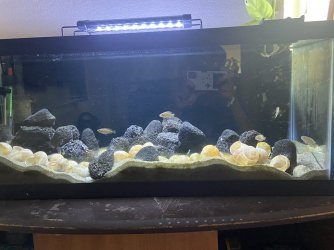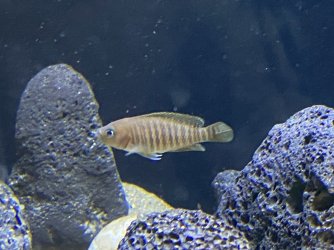Aj931
New Member
Hello every first time posting here, I have a question regarding a neolamprologus multifaciatus (multis) shell dweller tank I set up a little over a year ago. I bought a group of 5 multis unsexed from a LFS and put them in a 20 gallon long with 36 escargo shells i bought off amazon. I use playsand as the substrate as i didnt have any aragonite at the time and have just been buffering with lake malawi buffer(all i have). The parameters of the tank are as follows:
Ammonia 0
Nitritre 0
Nitrate 40
Ph 8.2
The issue is after over a year they have yet to breed which although unlikely has led me to believe that they may all be male or female. Would it be possible to add more multis to this tank or would their already established territories cause aggression to new multis. Hesitant to buy more as they cost around 20 dollars each but ive checked my parameters and everything else seems to be in order.
Ammonia 0
Nitritre 0
Nitrate 40
Ph 8.2
The issue is after over a year they have yet to breed which although unlikely has led me to believe that they may all be male or female. Would it be possible to add more multis to this tank or would their already established territories cause aggression to new multis. Hesitant to buy more as they cost around 20 dollars each but ive checked my parameters and everything else seems to be in order.



